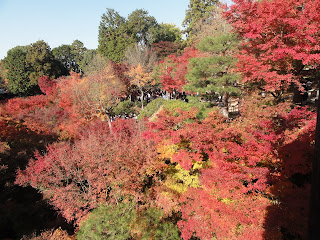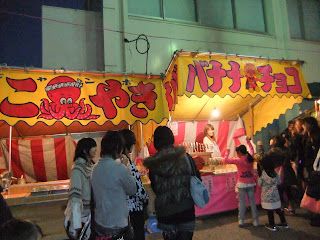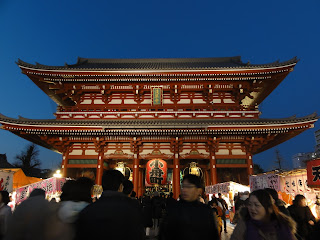
In spring, one of the best-loved symbols of Japan makes a dramatic sweep across the country. Sakura (cherry blossoms) bloom usually from the end of March through April in a kind of wave starting in southern Kyushu and working its way northeast. Cherry blossoms last only 1-2 weeks.
 When cherry blossoms are in full bloom, Japanese often hold a party "Hanami" to enjoy beautiful scenery of cherry blossoms and celebrate the beginning of business/academic year.
When cherry blossoms are in full bloom, Japanese often hold a party "Hanami" to enjoy beautiful scenery of cherry blossoms and celebrate the beginning of business/academic year. (The business year in Japan begins in April )
People bring lunch boxes and many dozens of alcohols to share, and maybe a karaoke kit.
Japan is also hit by Typhoons during the Tsuyu season.
Although tsuyu is a gloomy time, the rain is very important for rice cultivation . Also, there are many pretty flowers blooming at this time. One of them is ajisai (hydrangea) which is a symbol of the rainy season in Japan.
 |
| Asisai |



When the rainy season is over, Japan is experiencing a summer. Japanese summer is often characterized "hot", and "humid". But high pressures stay most of the season and the temperatures may rise up to 35 decrees/celsius. During summer, there are a lot of festivals(Matsuri) all across Japan.
 Changing color of leaves indicates the beginning of Autumn.
Changing color of leaves indicates the beginning of Autumn. Many of trees turn color in autumn in Japan, especially maple trees, and people love to enjoy viewing brilliantly-colored autumn trees. (Momijigari)
Kyoto is a famous Momijigari destination for Japanese. During Autumn, Kyoto is very crowded with visitors and hotels or ryokan experiences their busiest season. Viewing red, yellow colored leaves behind nostalgic scenery of temples in Kyoto is absolutely breath-taking.

The coldest month in Japan is January (or February), and temperature starts rising towards Spring season.

If you stay in Japan for a long term, you would experience some of four seasons.
I would say the best time to visit Japan is Spring - Summer.
Temperature is comfortable, and there are a lot of events and festivals to be hold around these seasons.





























